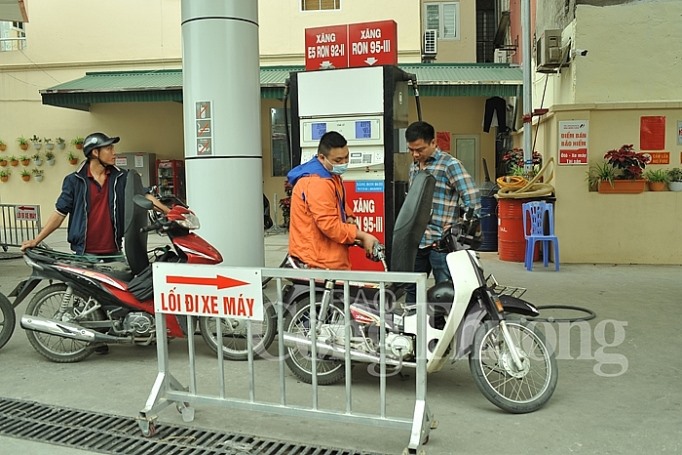 Economy
Economy

Supplies of RON95, one of the two main types of petrol used in Việt Nam, were still sufficient, according to the Ministry of Industry and Trade following complaints raised by some distributors about shortages.
 |
| A petrol station on Trần Khát Chân Street in Hà Nội. — Photo congthuong.vn |
HÀ NỘI — Supplies of RON95, one of the two main types of petrol used in Việt Nam, were still sufficient, according to the Ministry of Industry and Trade following complaints raised by some distributors about shortages.
Distributors said there had been a shortage for nearly two weeks and some petrol stations were forced to hang signs saying they were out of RON95, leaving customers to fill up with bio-fuel E5 RON92.
Responding to the concerns, Trần Duy Đông, director of the ministry’s Domestic Market Department on Wednesday, said it was only a temporary shortage due to a power cut at Nghi Sơn Refinery.
The ministry has instructed the refinery to quickly resolve the incident. The refinery resumed operations today.
In addition, the MoIT has asked big petrol enterprises such as Việt Nam National Petroleum Group (Petrolimex) to increase imports from South Korea or even other markets with higher prices and taxes to ensure local supplies.
“The ministry sent documents to provincial departments of industry and trade to enhance supervision on petrol stations to prevent stockpiling RON95 petroleum and selling poor quality products,” he added.
Experts said distributors had been instructed to set up a petrol price stabilisation funds based on the amount of petrol they imported or sold.
A leader from a large distributor said his company’s price stabilisation fund was VNĐ400 million (US$17,245) in debit, so they had to use company capital or bank loans to make up the difference.
However, Đông said businesses should be aware of their social responsibilities, especially Petrolimex and PetroVietnam.
State-owned firms must support the Government in implementing macro-economic policies with a long-term vision.
He added that the ministry was unable to increase the selling price and had to use the price stabilisation fund in the latest adjustment as it was two days after an 8.36 per cent hike in electricity tariffs. The two increases occurring at the same time could have major impacts. — VNS




